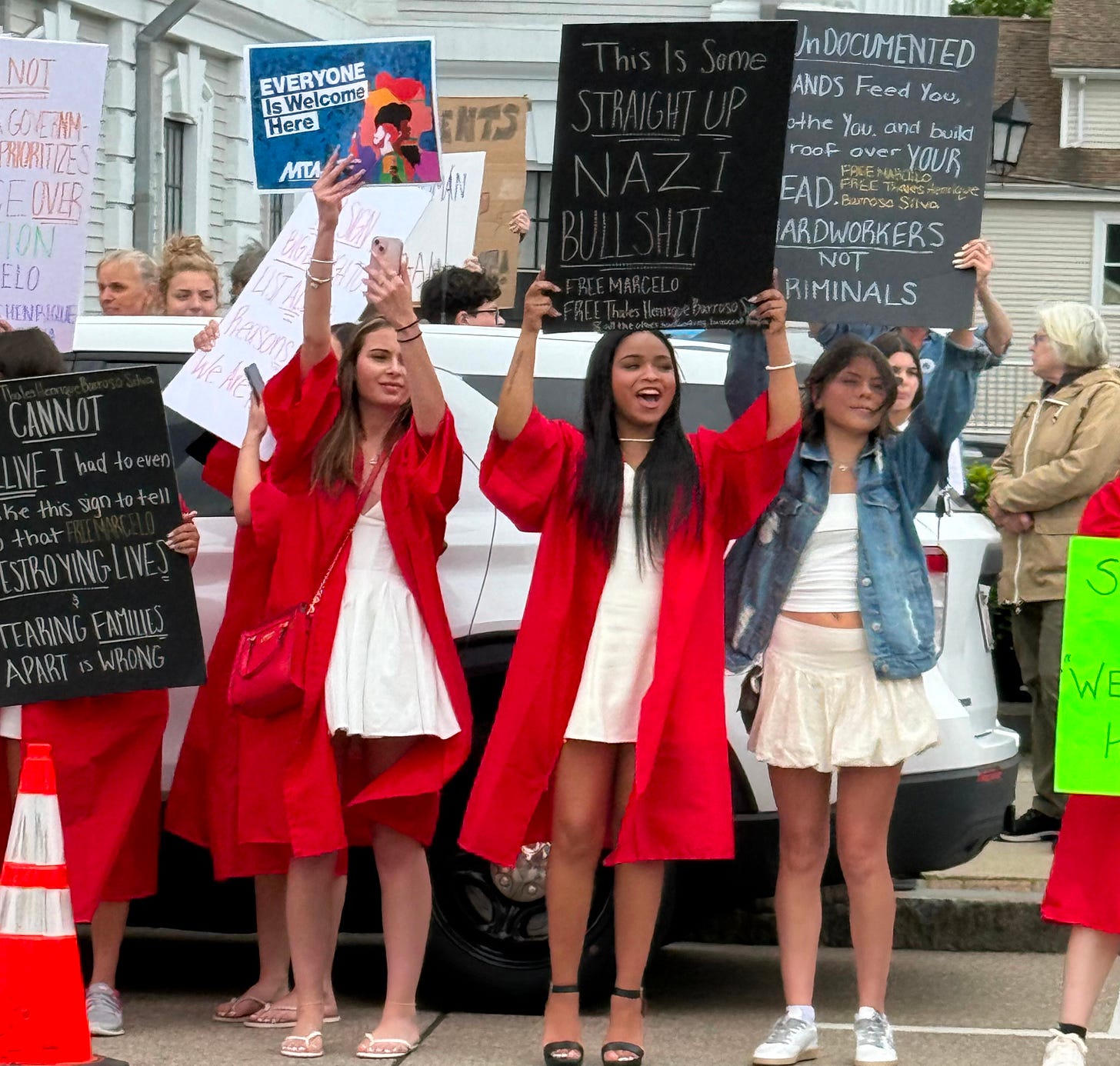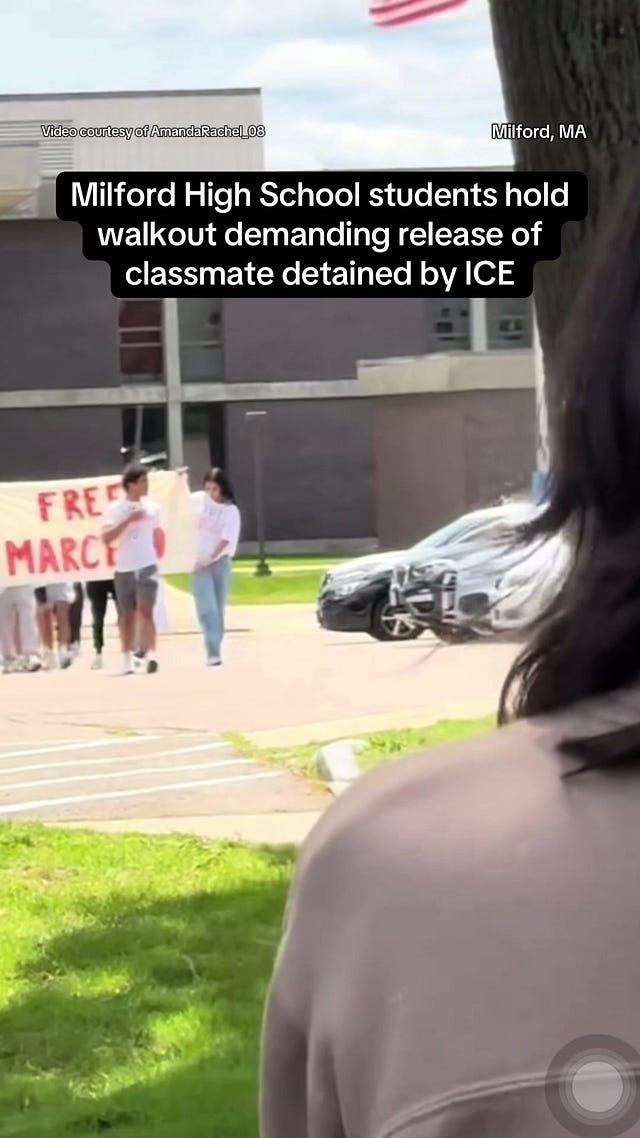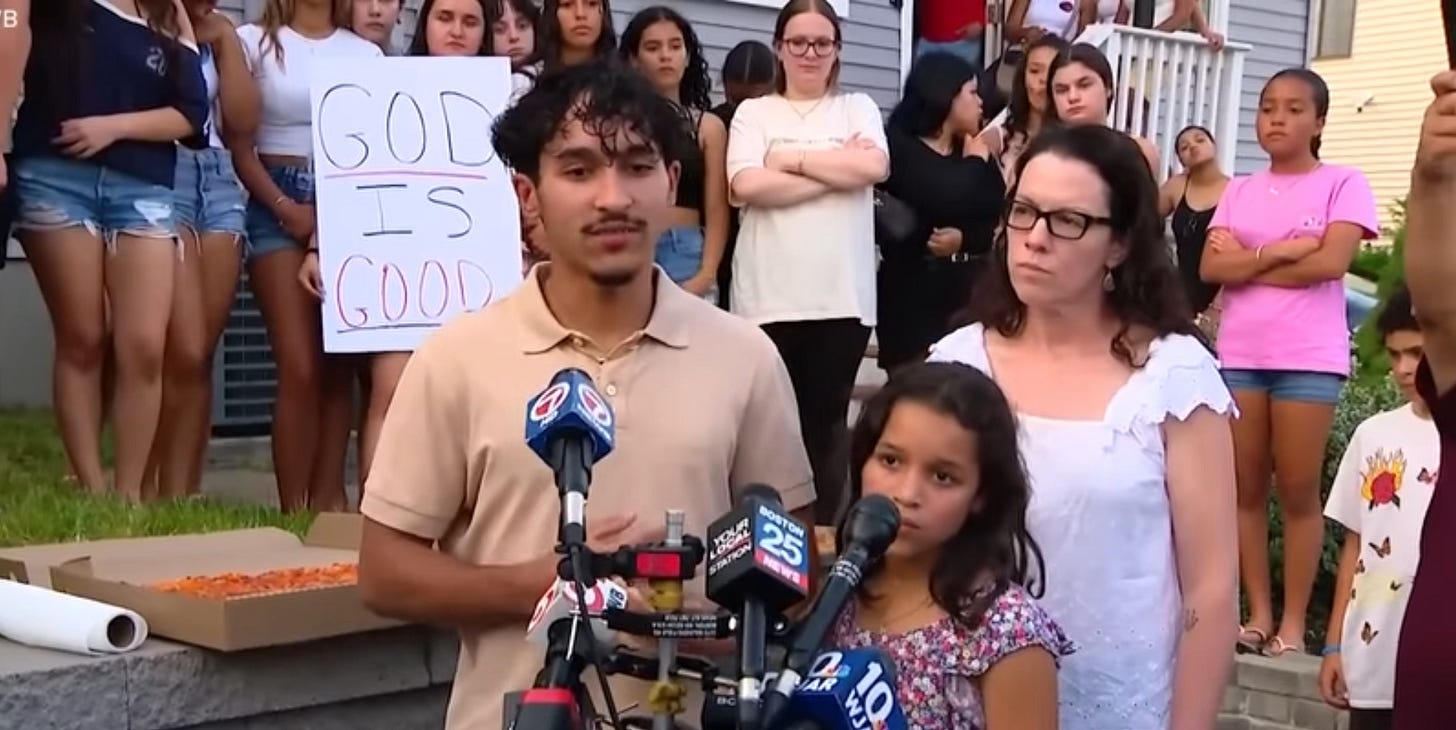The collective punishment of Trump’s arbitrary immigration policies
From Massachusetts to California, ICE agents are detaining immigrants who were never supposed to be targets—sparking outrage in communities across the country.

On May 31, Milford High School junior Marcleo Gomes da Silva was on his way to volleyball practice with his friends, driving his father’s car like any other high schooler. But what began as a routine afternoon quickly turned into what Milford resident Amanda Desmond called a “heartbreaking” moment. ICE officers, who were reportedly seeking to detain his father, stopped his car and instead took Gomes da Silva into custody.
Gomes da Silva, who came to the U.S. from Brazil at the age of seven on a student visa that has since expired, was not charged with a crime.
Desmond, whose daughter is friends with Gomes da Silva, described him as a “sweet person, a band member, and a child of god,” and said he was scheduled to perform with the band at Milford High School’s graduation the next day.
In response, classmates and community members rallied to support him with dozens leaving their graduation ceremony to protest at city hall, while hundreds more staged a walkout the following day.
(Footage of Milford High School’s June 2 walkout received 1.5 million views on our TikTok)
As his classmates took to the streets, Gomes da Silva was being held at an ICE detention facility in Burlington, Massachusetts. Gomes da Silva told reporters his conditions inside were appalling: he had to sleep on a concrete floor, had very little access to a shower, was given minimal food—only chips and crackers—and shared a toilet with dozens of other detainees. He was one of nearly 1,500 people held in ICE custody in Massachusetts this month alone.
“We understand that ICE is allowed to take undocumented people, but it’s unacceptable when they treat them like dogs,” said Desmond’s daughter, Caylee Dion, a freshman at Milford High School. “Whether they're illegal or not, they are still all human beings with souls. We are the same whether people like it or not.”
After nearly a week in detention—and federal judges issuing orders to stop his removal from the state—Gomes da Silva was released on $2,000 bond, following a conversation with a lawyer, something he was reportedly not able to do until a week after his detention, a basic component of due process.
“I don’t wanna cry — but I wanna say that that place is not good,” Gomes da Silva told reporters. “You sleep on concrete floors. Using the restroom — I had to do it in front of 35-year-old men. It’s degrading.”
Gomes Da Silva is not alone.
Across Massachusetts and beyond, undocumented immigrants are increasingly being swept up in ICE raids under the Trump administration’s escalating crackdown on immigration. ICE has arrested more than 100,000 people so far during Trump’s second term. As of early June 2025, daily arrests are exceeding 2,000, with a detained population of about 54,000, crowding ICE detention facilities that have a reputation for being overcrowded with these “degrading” conditions.
However, ICE’s public data is limited. It’s often unclear who is being arrested and how many have prior criminal convictions. According to data from the nonpartisan TRAC Immigration project, nearly 43% of those arrested have no criminal record at all.
ICE maintains that it will deport anyone encountered during an operation, whether they are the target or not, which has fueled a national backlash with community members saying these actions are both indiscriminate and inhumane.
“Everyone deserves a chance at happiness and life. When did everyone lose their empathy?” Dion said. “We are living in a world that so many people in government and presidents once ran to avoid. Every single opportunity, and peace, and equality is being stripped away from the U.S. due to Trump and ICE.”
In Paramount, California, this backlash has escalated into communities clashing with police and ICE officers after an ICE raid on a Home Depot led to statewide protests.
Protesters confronted ICE and police officers directly, with some shouting and hurling insults at them and physically putting their bodies on the line to block detentions. Other protesters stood around the officers holding signs and waving flags from the countries of origin for many immigrants, including Mexico. Officers pushed back against some of these protests by deploying tear gas into crowds, physically assaulting demonstrators, and making several arrests.
(Video by Credit: @alex_6.0___ via Storyful)
President Trump responded to these protests by deploying 300 troops of the National Guard to Los Angeles, the first time such action has been taken since the 1992 LA riots, to take down what he describes are “radical left lunatics” and “rioters.” The Department of Homeland Security said the deployment was meant to protect “ICE officers and federal law enforcement agents carrying out basic deportation operations in Los Angeles” from “violent mobs.” ICE initially reported arresting 44 people in the raids, though some news outlets reported the number had climbed above 120 by late Saturday.
Despite the federal government’s response, activists on the ground vow to keep fighting for immigrant rights.
“Our community is under attack and has been terrorized,” said Angelica Salas, executive director of the Coalition for Humane Immigrant Rights (CHIRLA), to a crowd of protesters. “These are workers, these are fathers, these are mothers.”
Her words echo a broader truth that community members say lies at the heart of Trump’s immigration policies: the disproportionate impact these raids have on communities of color, especially the Hispanic community.
A 2018 study from UC Berkeley found that while Hispanic people made up about 50% of the undocumented population, they accounted for 91% of those in ICE detention. Most of the raids have occurred in urban, Democratic-leaning areas where large immigrant populations live—places like California, New Jersey, Florida, and Massachusetts.
For many, the consequences are part of a broader legacy of systemic discrimination that is now being extended to those with the least protection under the law: undocumented immigrants.
“People of color and race are now being detained and treated differently,” Dion said. “White people, Black people, brown people all commit crime, but communities of color are treated 10 times worse. The government is failing people and children day by day.”





